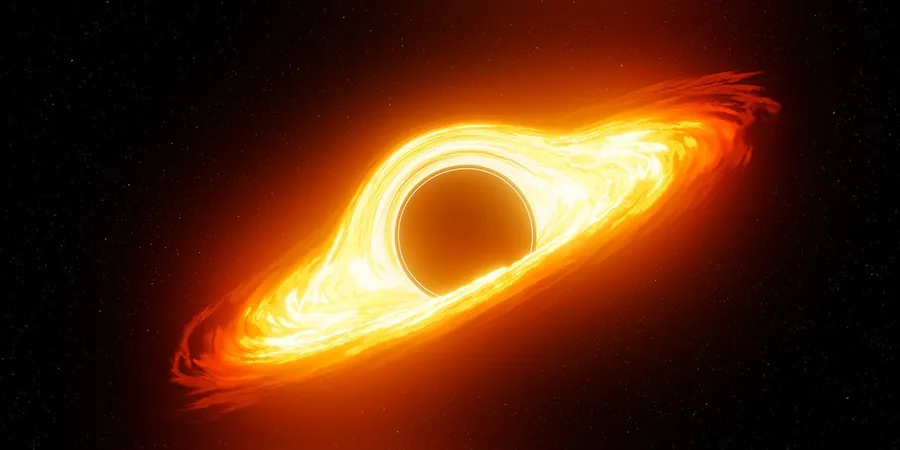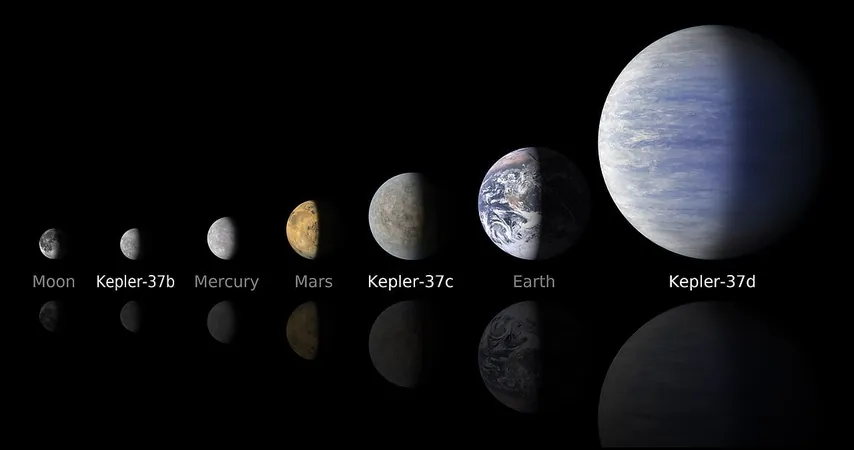
Unlocking the Secrets of Black Holes: How JWST is Changing Our Understanding of the Universe
2025-08-02
Author: Wei
A New Era of Black Hole Discovery
Astrophysics is undergoing a thrilling transformation with groundbreaking techniques emerging to study the mysterious black holes that populate our universe. From the revolutionary imagery produced by the Event Horizon Telescope, which unveiled the shadow of our Milky Way’s supermassive black hole, to the astonishing discoveries made through gravitational waves from distant stellar-mass black hole mergers, researchers are delving deeper into these cosmic enigmas than ever before.
Beyond Individual Black Holes: Understanding the Bigger Picture
While examining solitary black holes provides valuable insights, scientists are eager to grasp the overall black hole population: understanding their formation, growth, and their significant impact on the galaxies that cradle them. A recent study highlights the James Webb Space Telescope (JWST) as a game-changer in this quest.
How Scientists Detect Black Holes: The Challenge of Darkness
Black holes are notoriously elusive, appearing... well, black. Researchers often detect them through the glow of intense heat emanating from the swirling accretion discs that orbit them. This often involves looking for X-rays, though only the most massive black holes tend to shine brightly in these high-energy spectra. Occasionally, emissions from the accretion disc become visible light, dazzlingly illuminating a whole galaxy as a quasar. However, dust can obscure these signals.
JWST: Peering Through the Cosmic Veil
Thanks to its advanced infrared capabilities, JWST offers a unique advantage, allowing scientists to peek through the cosmic dust and detect black holes that are eight times fainter than those observed by previous infrared telescopes. Its wider range of wavelengths also enables the identification of emissions from galaxies that existed when the universe was still in its infancy.
Revolutionary Findings: Studying Distant Galaxies with JWST
A recent research paper utilized data from the CEERS survey—the JWST's initial deep imaging project—to identify 41 galaxies with actively growing black holes. By analyzing brightness across different wavelengths, researchers could estimate how much material these black holes are consuming. This intricate analysis led to the creation of a luminosity function, revealing the total growth of the black hole population through cosmic time.
The Cosmic Timeline: Black Hole Activity Through the Ages
Though this study is still in its early stages, the findings are illuminating: black hole activity surged in the early universe, peaking around four billion years after the Big Bang, before beginning a decline. Notably, this coincides with the peak of star formation, suggesting a possible interplay between the two processes. Future surveys will reveal whether black hole growth directly influences star formation or if another force drives both phenomena.
The Journey Ahead: More Discoveries Await
As researchers continue their exploration, the mysteries of black holes promise to unravel further, offering insights that could reshape our understanding of the universe.




 Brasil (PT)
Brasil (PT)
 Canada (EN)
Canada (EN)
 Chile (ES)
Chile (ES)
 Česko (CS)
Česko (CS)
 대한민국 (KO)
대한민국 (KO)
 España (ES)
España (ES)
 France (FR)
France (FR)
 Hong Kong (EN)
Hong Kong (EN)
 Italia (IT)
Italia (IT)
 日本 (JA)
日本 (JA)
 Magyarország (HU)
Magyarország (HU)
 Norge (NO)
Norge (NO)
 Polska (PL)
Polska (PL)
 Schweiz (DE)
Schweiz (DE)
 Singapore (EN)
Singapore (EN)
 Sverige (SV)
Sverige (SV)
 Suomi (FI)
Suomi (FI)
 Türkiye (TR)
Türkiye (TR)
 الإمارات العربية المتحدة (AR)
الإمارات العربية المتحدة (AR)